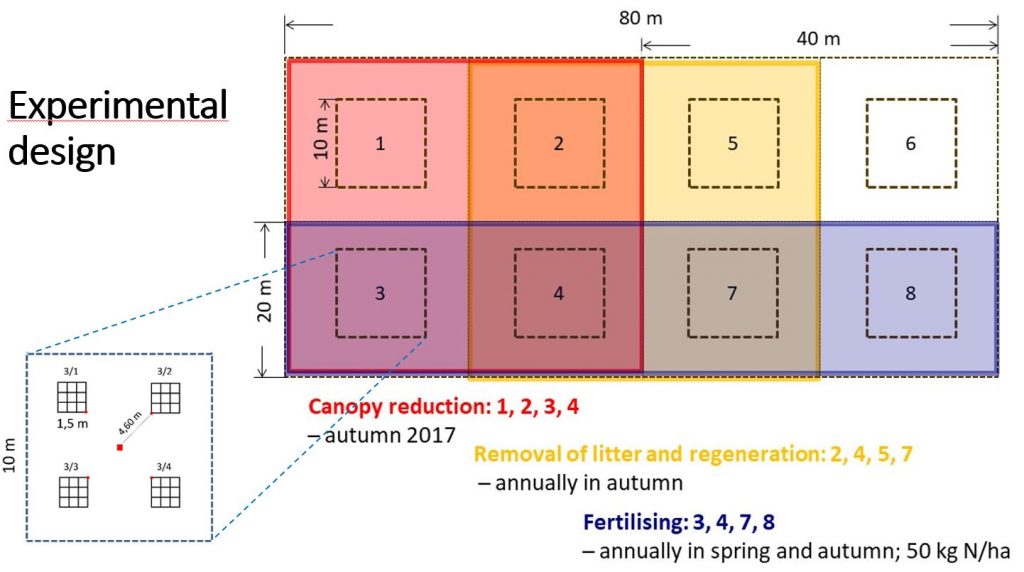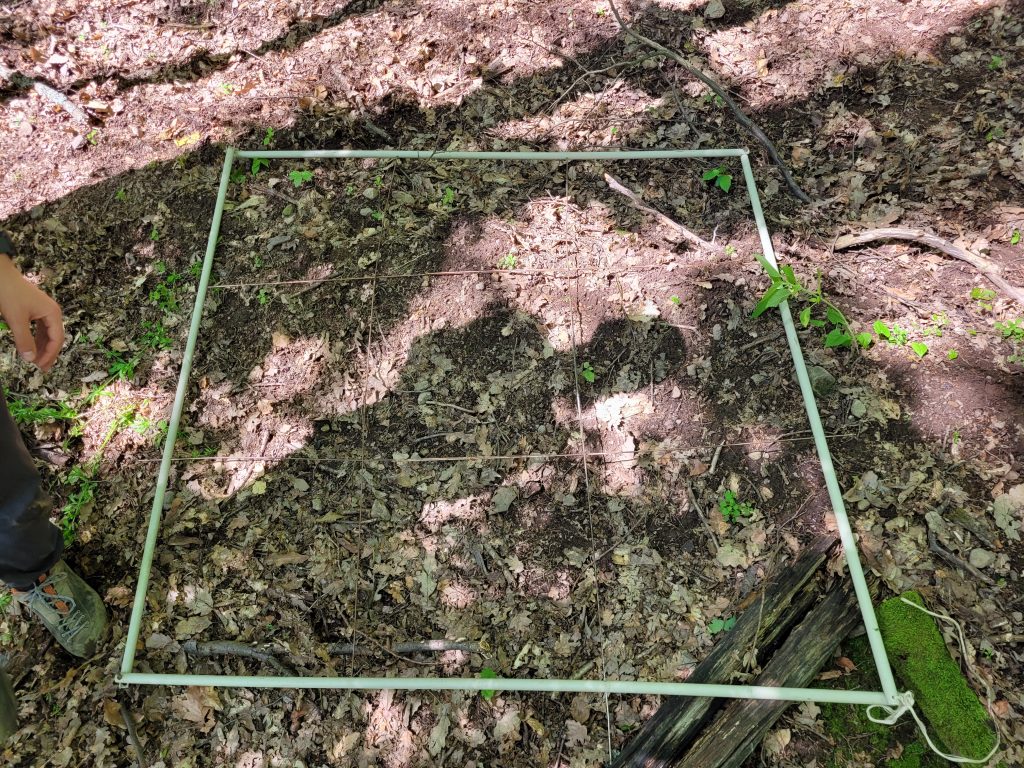Location
- Slovakia, Western Carpathians
- subcontinental oak forests
- altitudes about 500 m a.s.l.
- mean annual temperature 7 – 8 °C, mean annual precipitation 600 – 700 mm
- anthropogenic deposition of nitrogen 6 -11 kg/ha/year
- experiment consists of 5 sites meeting following criteria
- andesite bedrock
- south – west aspect
- tree canopy dominated by oak (Quercus petraea agg.)
- stand age above 70 years
- vegetation classified as Sorbo torminalis – Quercetum Svoboda ex Blažková 1962

Experimental design
- combination of 3 treatments representing historical management and recent environmental changes
- canopy reduction – mainly the subcanopy trees and shrub, particularly those with high shade-casting ability like Carpinus betulus
- litter raking – realised each year, approximately at the beginning of the November
- nitrogen fertilisation – applied twice a year in an early spring and after litter raking in amount of 50 kg/ha/year
- treatments are applied at the subplot level (20x20m), creating specific spatial pattern to reach unique combinations (including one subplot without any intervention for control)

Data collection
since autumn 2017 on all combinations of treatments
- vascular plants (Karol Ujházy et al.)
- bryophytes (Pavel Širka)
- soil fauna (Erika Gömöryová et al.)
- soil respiration (Erika Gömöryová et al.)
- soil nutrient content (Erika Gömöryová et al.)
- soil physical properties (Marián Homolák)
- direct and diffuse light (Vlastimil Knopp)
- growth of trees (Michal Bošeľa)
- forest microclimate (František Máliš)
- fungi (Stanislav Glejdura)
